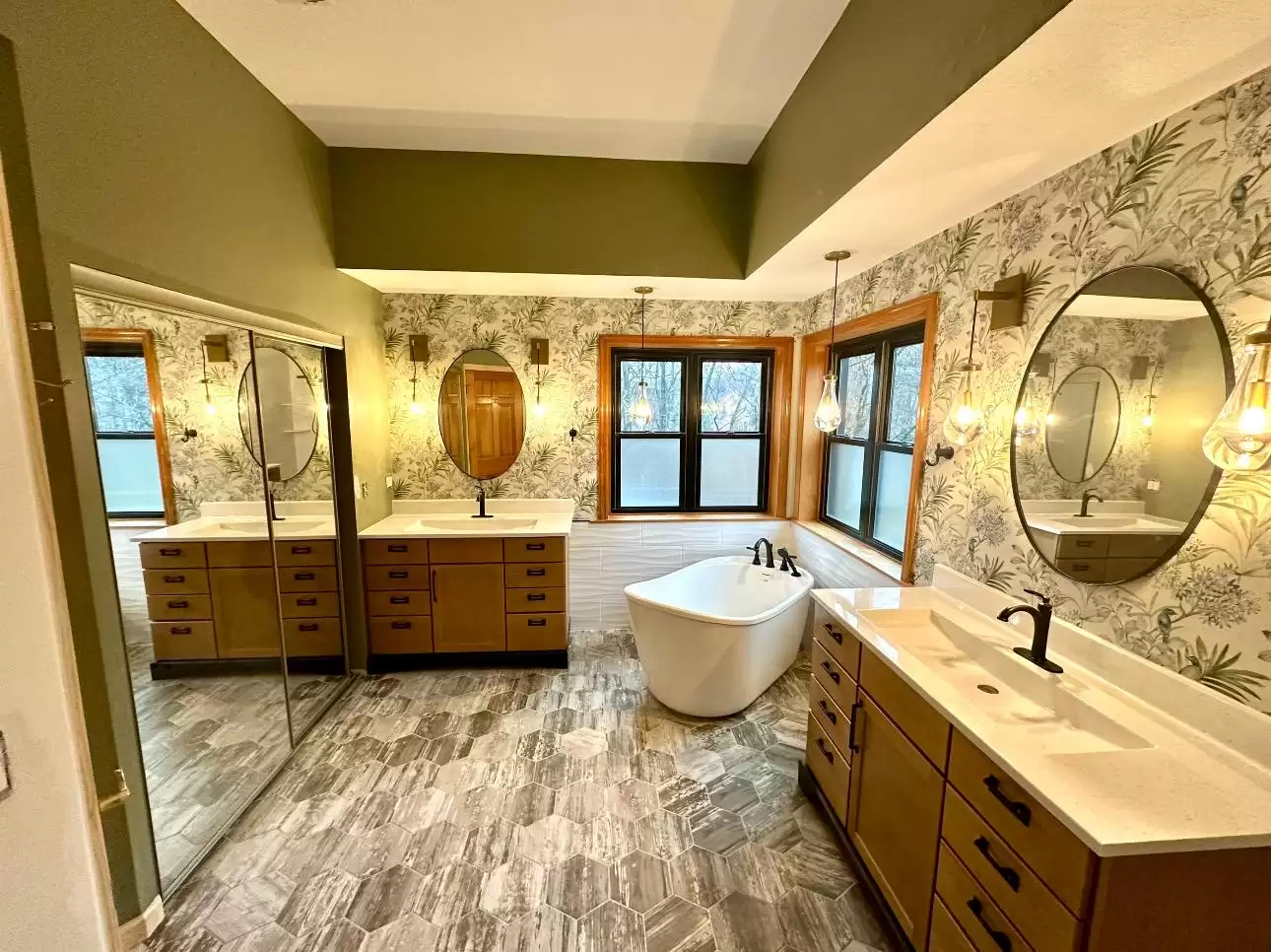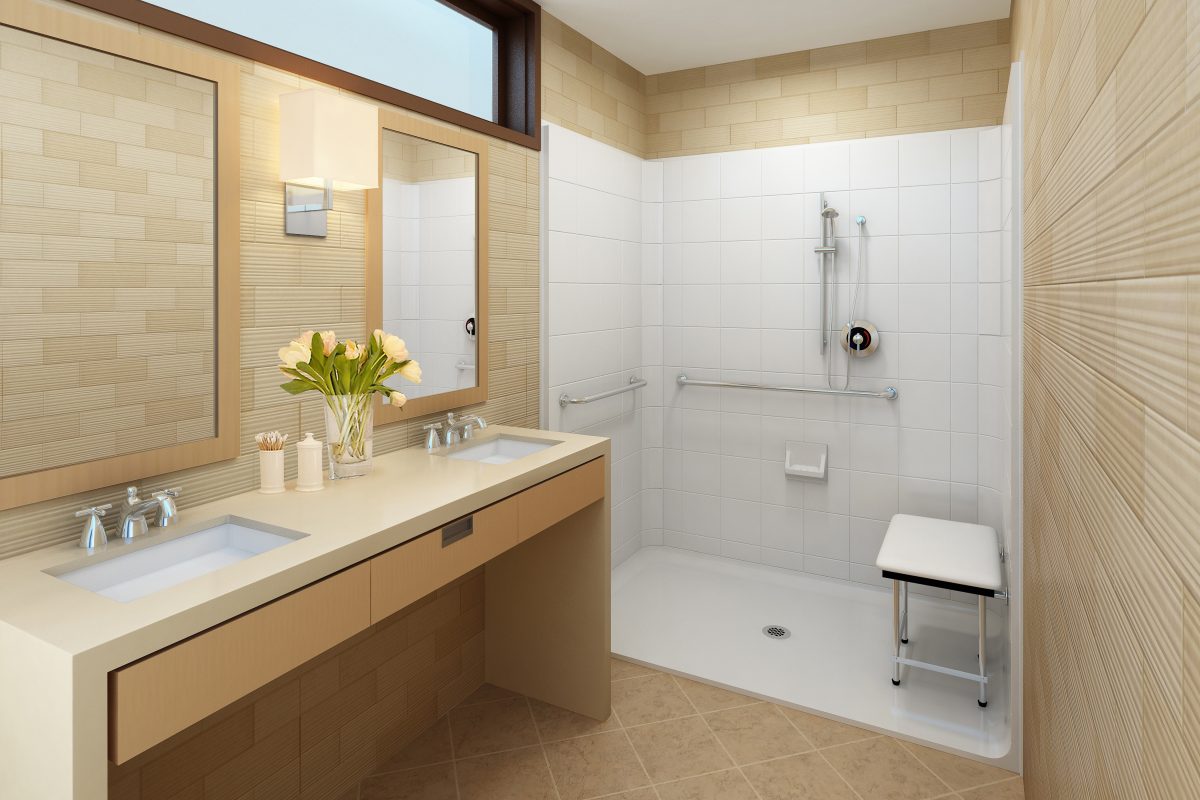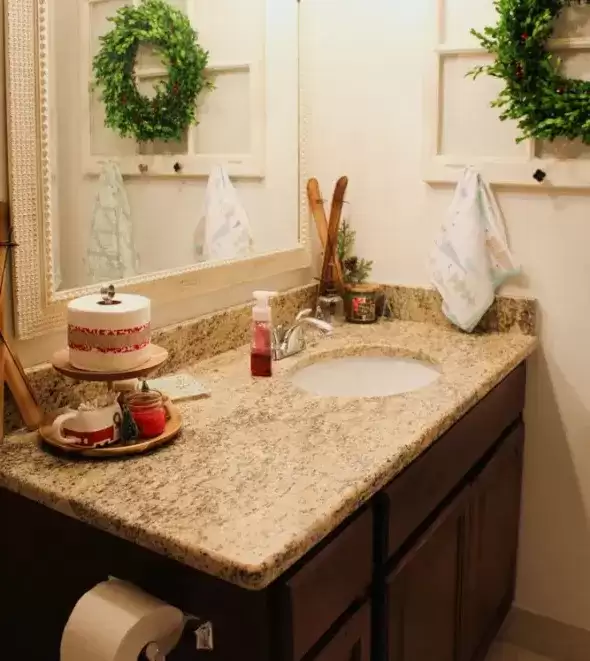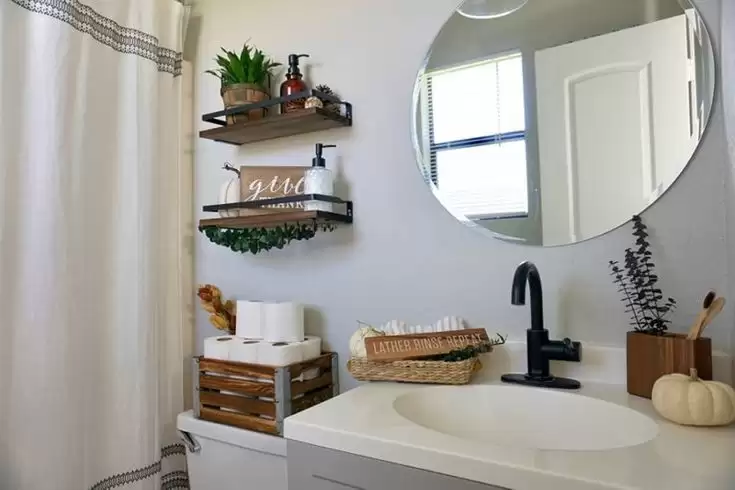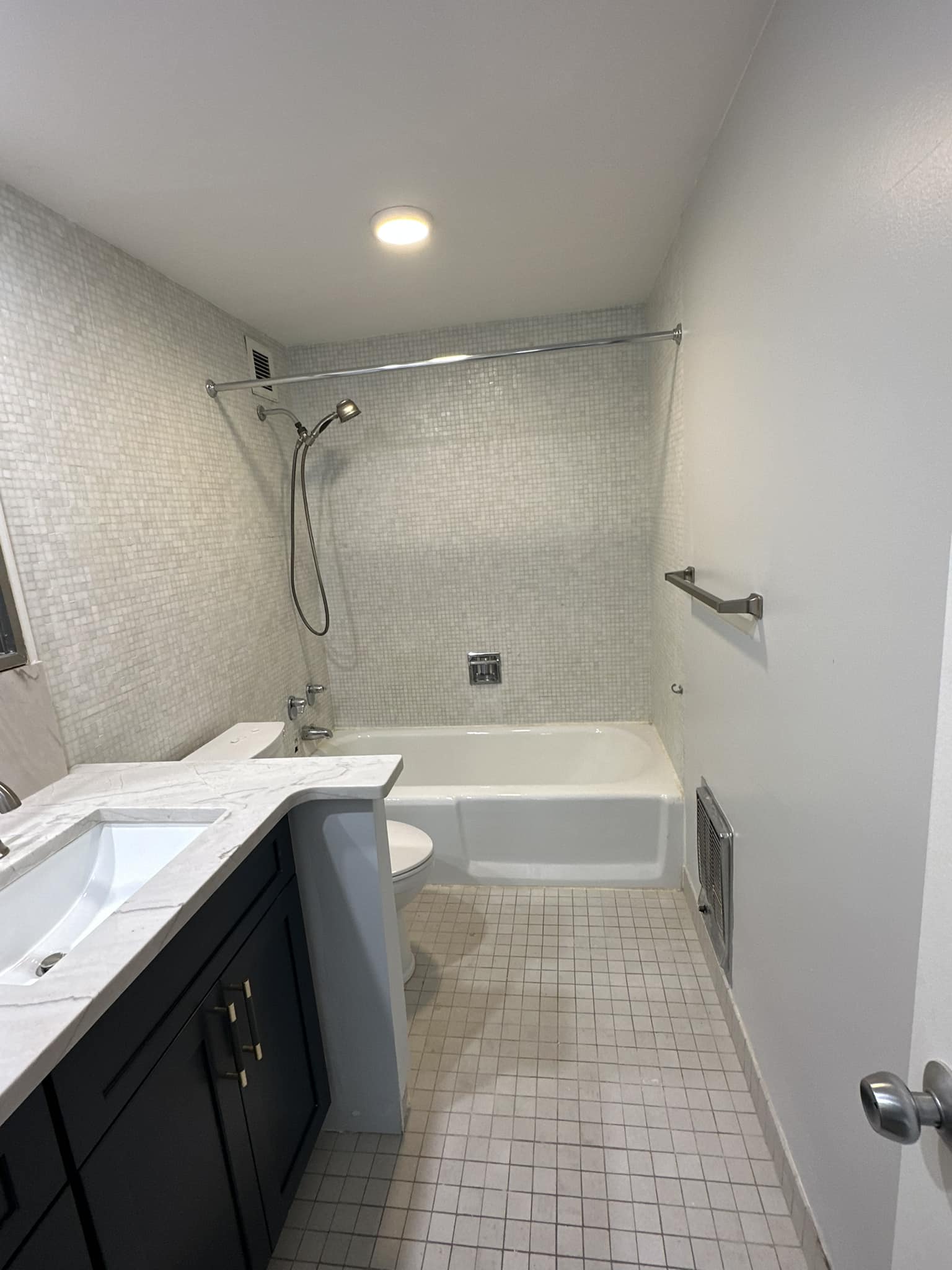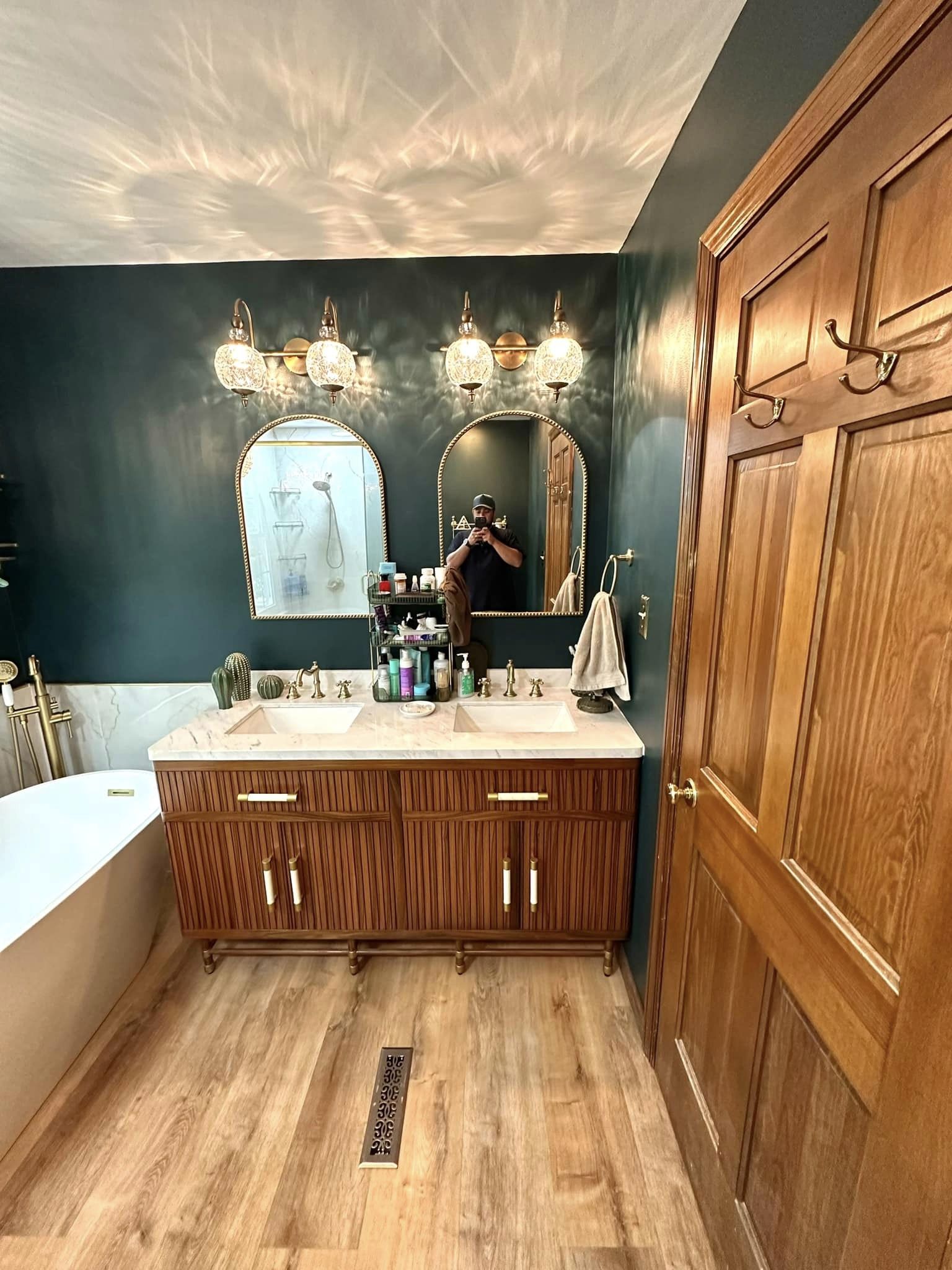An individual’s retirement years certainly have their benefits. Old age comes with wisdom, grandchildren, extra free time, and plenty of time to relax. But those golden years also come with challenges, especially increased physical limitations. And if you or your parents are experiencing physical challenges, you may have concerns about getting through the day unassisted, especially when it comes to bathing. That’s where an ADA-compliant shower for handicapped people can be helpful.
Properly designing an ADA-compliant shower can keep you or your loved one safe while bathing alone. If you’re thinking about safety-focused bathroom remodeling ideas, pay special attention to seats, grab bars, and other features within the shower.
What Makes A Shower Handicap Accessible?
The Americans With Disabilities Act (ADA) has clear guidelines on exactly how to ensure a shower remains ADA-compliant for individuals with disabilities. Although these standards are intended for public and commercial facilities, the stipulations they created are useful in residential settings as well, because the ADA gets very specific across a number of shower types, including:
- Transfer showers, which are designed so individuals in wheelchairs can roll next to a shower seat, then transfer to the seat.
- Roll-In showers, which allow for the entire wheelchair to roll into the shower stall.
- Alternate roll-in showers, which are similar to regular roll-in showers, but are smaller. These also pay close attention to the swing of the door in relation to a wheelchair’s placement within the bathroom.
- Showers inside bathtubs, which are required to have a permanent or removable in-tub seat.
While specific requirements for each type of shower vary, there are some common denominators—in case your wondering how to design an ADA-compliant shower. Examples include:
- ADA-compliant thresholds should never exceed 0.5” from the bathroom floor to the shower floor.
- ADA-compliant grab bars should be 1.25”-1.5” in diameter, be rated to at least 250 pounds, and be placed 33”-36” above the floor.
- ADA-compliant shower seats should be mounted 17”=19” above the floor and hold at least 250 pounds.
- ADA-compliant shower floors have a slope of no more than ½” per foot, which is actually less than commercial plumbing code! This requirement is specifically to help protect the user.
- ADA-compliant hand-held units must be reachable within 48” of the shower floor.
- ADA-compliant showers may not exceed water temperatures of 120°F.
Designing A Shower
for A Handicapped Loved One
If you’re designing a new handicap-accessible shower for someone you love, the ADA guidelines are an excellent starting point for ensuring they remain safe while bathing.
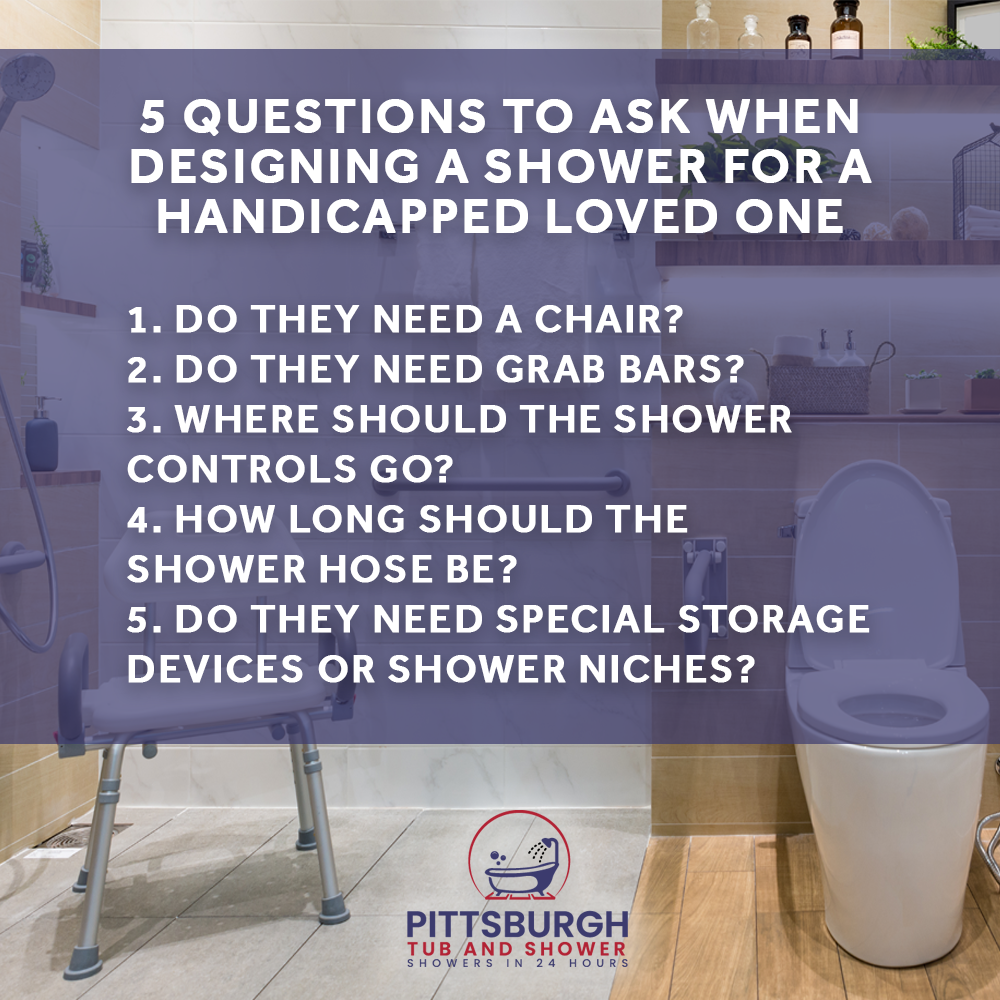
But you can also go a step further. Here are a few questions to ask if you’re designing a shower for someone with disabilities:
Do they need a chair?
A shower chair can improve safety and allow them to bathe comfortably for longer periods of time. Plus, if they require assistance from an aide or loved one while bathing, a chair can make them easier to reach.
Do they need grab bars?
For some individuals, grab bars are essential for stability and for transferring to and from a wheelchair.
If your loved one requires grab bars, consider where those bars should be installed inside the shower, especially if other assistive devices are being installed as well. For example, if you’re also installing a shower chair, your loved one may require a nearby grab bar so they can safely sit and stand on their own.
In general, though, it’s a good practice to install a grab bar near the showerhead and near the entrance of the shower, as this will help them while stepping in and out of the shower stall. Even if you don’t have a prominent threshold posing as a tripping hazard, this extra grab bar can assist in preventing slips and falls.
Where should the shower controls go?
If you’re loved one has physical handicaps, they may find it challenging to reach into the shower to change the water temperature from a safe and dry distance. Installing the shower controls close to the shower entryway will allow them to set the water to a comfortable temperature without assistance.
How long should the shower hose be?
The optimum length of the shower hose may be determined by a few different factors, including:
- Whether or not your loved one baths with a nurse’s aide or family member
- Where the hose is mounted onto the wall, which determines how far it needs to reach
- How mobile your loved one is, especially when it comes to flexibility and balance
But be careful: It’s also important not to have too much hose, as this can become a tripping hazard!
Do they need special storage devices or shower niches?
If you’re loved one has mobility issues, they likely can’t store their soaps and shampoos on the floor. Instead, they may benefit from a shelf, shower niche, or a simple shower caddy that attaches to the wall at a convenient height.
Where to Find A Handicap-Accessible
Shower in Pittsburgh
If you’re interested in a shower for people with disabilities, contact the Pittsburgh Tub & Shower team. We have years of experience installing handicap-accessible showers in Pittsburgh, ensuring loved ones have access to ADA-compliant shower stalls that keep them safe.
Our prefab shower stalls can be installed in less than 24 hours, but if you’d like to give your loved one a more specialized touch, we can install a custom ADA-compliant shower stall that can help your loved one remain safe and independent.
Contact us at 412-403-6183 or review our financing options to get started.



